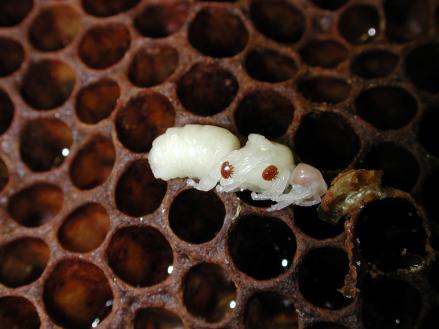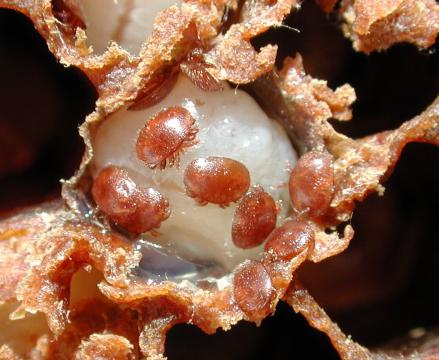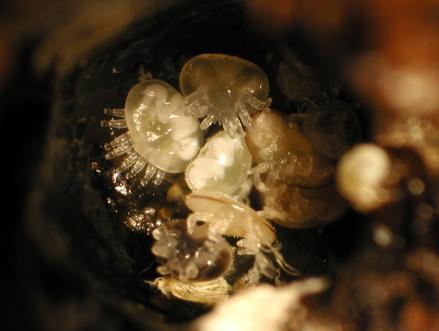Don’t Kill Bees Save Bees! Live Bee Removal Rancho Mirage, we will help you remove on wanted bees please remember one of every three bites of food you eat depends on the honey bees! Proper Transportation of the Queen Bees is our number one priority and very important part of a live bee removal Call us Today 951-476-8495
Live Bee Removal in Rancho Mirage is one our many cities we serve same day!
Please enjoy our new article:
A smelling bee?
 If there were an international smelling bee, a deadly mite would be a favorite to win.
If there were an international smelling bee, a deadly mite would be a favorite to win.
New research has revealed that Varroa mites, the most-serious threat to honeybees worldwide, are infiltrating hives by smelling like bees.
The Michigan State University-led study, appearing in the current issue of Biology Letters, shows that being able to smell like their hostess reduces the chance that the parasite is found and killed.
The parasites were originally found on Asian honeybees. The invasive species, however, revealed their versatility when they began infesting and killing European honeybees.
“The mites from Asian honeybees, or the original host, are more efficient in mimicking both Asian and European honeybees,” said Zachary Huang, MSU entomologist and one of the papers’ lead authors. “This

New MSU research reveals that Varroa mites, the most-serious threat to honeybees worldwide, are infiltrating hives by smelling like bees. Photo by Zachary Huang
remarkable adaptability may explain their relatively recent host shift from Asian to European honeybees.”
Chemical camouflage isn’t a new weapon in insects’ arsenals. Bolas spiders, for example, emit not one but three chemicals to emulate a sex pheromone to attract moths to eat. However, fooling socially sophisticated insects, such as honeybees, requires the faux scents to be spot-on.
That’s because the complex society of bees comprises tens of thousands of individuals divided by a sophisticated caste system. So, the mites aren’t simply tricking a solitary bee collecting pollen from a flower; they’re fooling an entire society. The stealthy mites do this by not only by being able to smell like bees, but also by effectively emitting the specific scents of small, individual colonies.
“They are essentially getting through the door and reaching the inner sanctum by using bees’ own complex communication codes against them,” Huang said.

New MSU research reveals that Varroa mites, the most-serious threat to honeybees worldwide, are infiltrating hives by smelling like bees. Photo by Zachary Huang
The codes in which they communicate are hydrocarbons, the simplest of organic compounds. By tweaking the proportions of these chemical colognes, the mites give off the correct scents to fool their enemies.
Specifically, it’s the cuticular hydrocarbons, compounds released from hair-shaft glands, that emit scents that differentiate queens from fertile and infertile workers; it’s the smell that invokes acceptance or triggers aggression.
Huang and his team showed that mites are able to change their surface chemicals to an entirely different species of honeybees. Further, they also revealed that the mites were able to make these changes rather quickly – adapting in days rather than evolving over generations.
“Our study challenged the mites’ ability to modify their hydrocarbons,” Huang said. “Conversely, bees are adapting to detect these invaders. Our results give a clear illustration of an arms race between the parasites and the host bees based on chemical mimicry and its detection.”
Additional researchers contributing to this study include scientists from the French National Institute for Agriculture Research, Honeybee Research Institute (China) and the Research Institute for the Biology of Insect (University of Tours, France).
Huang’s research is supported in part by MSU AgBioResearch.
Live Bee Removal helping Rancho Mirage and many other cities to remove unwanted bees. call us today 951-476-8495

